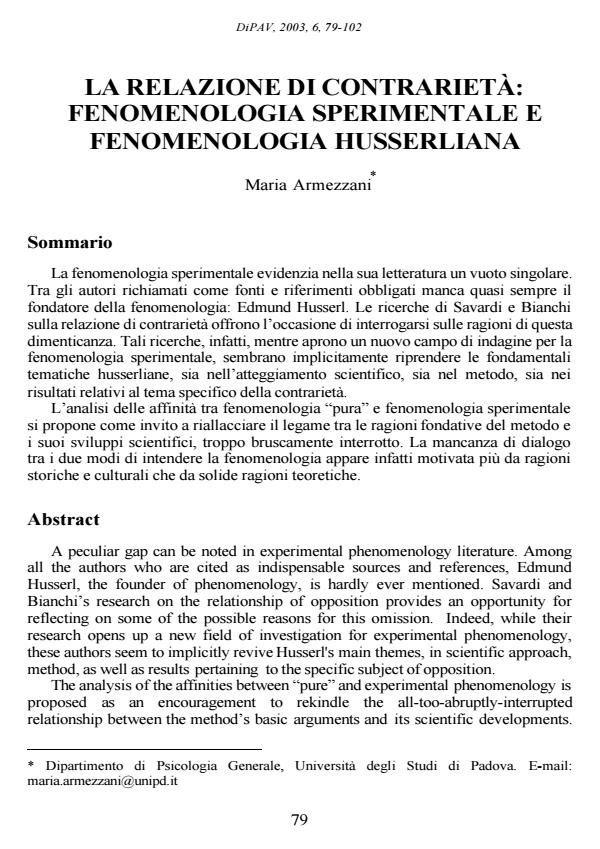La relazione di contrarietà: fenomenologia sperimentale e fenomenologia Husserliana
Titolo Rivista DiPAV - QUADERNI
Autori/Curatori Maria Armezzani
Anno di pubblicazione 2006 Fascicolo 2003/6
Lingua Italiano Numero pagine 24 P. Dimensione file 73 KB
DOI
Il DOI è il codice a barre della proprietà intellettuale: per saperne di più
clicca qui
Qui sotto puoi vedere in anteprima la prima pagina di questo articolo.
Se questo articolo ti interessa, lo puoi acquistare (e scaricare in formato pdf) seguendo le facili indicazioni per acquistare il download credit. Acquista Download Credits per scaricare questo Articolo in formato PDF

FrancoAngeli è membro della Publishers International Linking Association, Inc (PILA)associazione indipendente e non profit per facilitare (attraverso i servizi tecnologici implementati da CrossRef.org) l’accesso degli studiosi ai contenuti digitali nelle pubblicazioni professionali e scientifiche
A peculiar gap can be noted in experimental phenomenology literature. Among all the authors who are cited as indispensable sources and refer-ences, Edmund Husserl, the founder of phenomenology, is hardly ever men-tioned. Savardi and Bianchi’s research on the relationship of opposition provides an opportunity for reflecting on some of the possible reasons for this omission. Indeed, while their research opens up a new field of investiga-tion for experimental phenomenology, these authors seem to implicitly re-vive Husserl's main themes, in scientific approach, method, as well as re-sults pertaining to the specific subject of opposition. The analysis of the af-finities between pure and experimental phenomenology is proposed as an encouragement to rekindle the all-too-abruptly-interrupted relationship be-tween the method’s basic arguments and its scientific developments. The lack of dialogue between the two approaches to reading phenomenology is apparently due more to historical and cultural causes than to sound theoreti-cal reasons.
Maria Armezzani, La relazione di contrarietà: fenomenologia sperimentale e fenomenologia Husserliana in "DiPAV - QUADERNI" 6/2003, pp , DOI: